M Walker
Toward Improving Interventions Against Toxoplasmosis by Identifying Routes of Transmission Using Sporozoite- specific Serological Tools
Walker, M; Webster, J P; Milne, Gregory
Authors
J P Webster
Gregory Milne
Abstract
Background. Horizontal transmission of Toxoplasma gondii occurs primarily via ingestion of environmental oocysts or con- sumption of undercooked/raw meat containing cyst-stage bradyzoites. The relative importance of these 2 transmission routes remains unclear. Oocyst infection can be distinguished from bradyzoite infection by identification of immunoglobulin G (IgG) antibodies against T. gondii embryogenesis-related protein (TgERP). These antibodies are, however, thought to persist for only 6–8 months in human sera, limiting the use of TgERP serology to only those patients recently exposed to T. gondii. Yet recent sero- logical survey data indicate a more sustained persistence of anti-TgERP antibodies. Elucidating the duration of anti-TgERP IgG will help to determine whether TgERP serology has epidemiological utility for quantifying the relative importance of different routes of T. gondii transmission.
Methods. We developed a serocatalytic mathematical model to capture the change in seroprevalence of non-stage-specific IgG and anti-TgERP IgG antibodies with human age. The model was fitted to published datasets collected in an endemic region of Brazil to estimate the duration of anti-TgERP IgG antibodies, accounting for variable age–force of infection profiles and uncertainty in the diagnostic performance of TgERP serology.
Results. We found that anti-TgERP IgG persists for substantially longer than previously recognized, with estimates ranging from 8.3 to 41.1 years. The Brazilian datasets were consistent with oocysts being the predominant transmission route in these settings.
Conclusions. The longer than previously recognized duration of anti-TgERP antibodies indicates that anti-TgERP serology could be a useful tool for delineating T. gondii transmission routes in human populations. TgERP serology may therefore be an important epidemiological tool for informing the design of tailored, setting-specific public health information campaigns and interventions.
Citation
Walker, M., Webster, J. P., & Milne, G. (2020). Toward Improving Interventions Against Toxoplasmosis by Identifying Routes of Transmission Using Sporozoite- specific Serological Tools. Clinical Infectious Diseases, https://doi.org/10.1093/cid/ciaa428
| Journal Article Type | Article |
|---|---|
| Acceptance Date | Apr 2, 2020 |
| Publication Date | Apr 13, 2020 |
| Deposit Date | Apr 27, 2020 |
| Publicly Available Date | Apr 27, 2020 |
| Journal | Clinical Infectious Diseases |
| Print ISSN | 1058-4838 |
| Electronic ISSN | 1537-6591 |
| Publisher | Oxford University Press |
| Peer Reviewed | Peer Reviewed |
| DOI | https://doi.org/10.1093/cid/ciaa428 |
| Public URL | https://rvc-repository.worktribe.com/output/1377773 |
Files
12652_Toward Improving Interventions Against Toxoplasmosis by Identifying Routes of Transmission Using Sporozoite-specific Serological Tools_GOLD VoR.pdf
(470 Kb)
PDF
You might also like
Evolution of tetraspanin antigens in the zoonotic Asian blood fluke Schistosoma japonicum
(2023)
Journal Article
Is the incidence of congenital toxoplasmosis declining?
(2022)
Journal Article
Downloadable Citations
About RVC Repository
Administrator e-mail: publicationsrepos@rvc.ac.uk
This application uses the following open-source libraries:
SheetJS Community Edition
Apache License Version 2.0 (http://www.apache.org/licenses/)
PDF.js
Apache License Version 2.0 (http://www.apache.org/licenses/)
Font Awesome
SIL OFL 1.1 (http://scripts.sil.org/OFL)
MIT License (http://opensource.org/licenses/mit-license.html)
CC BY 3.0 ( http://creativecommons.org/licenses/by/3.0/)
Powered by Worktribe © 2025
Advanced Search
